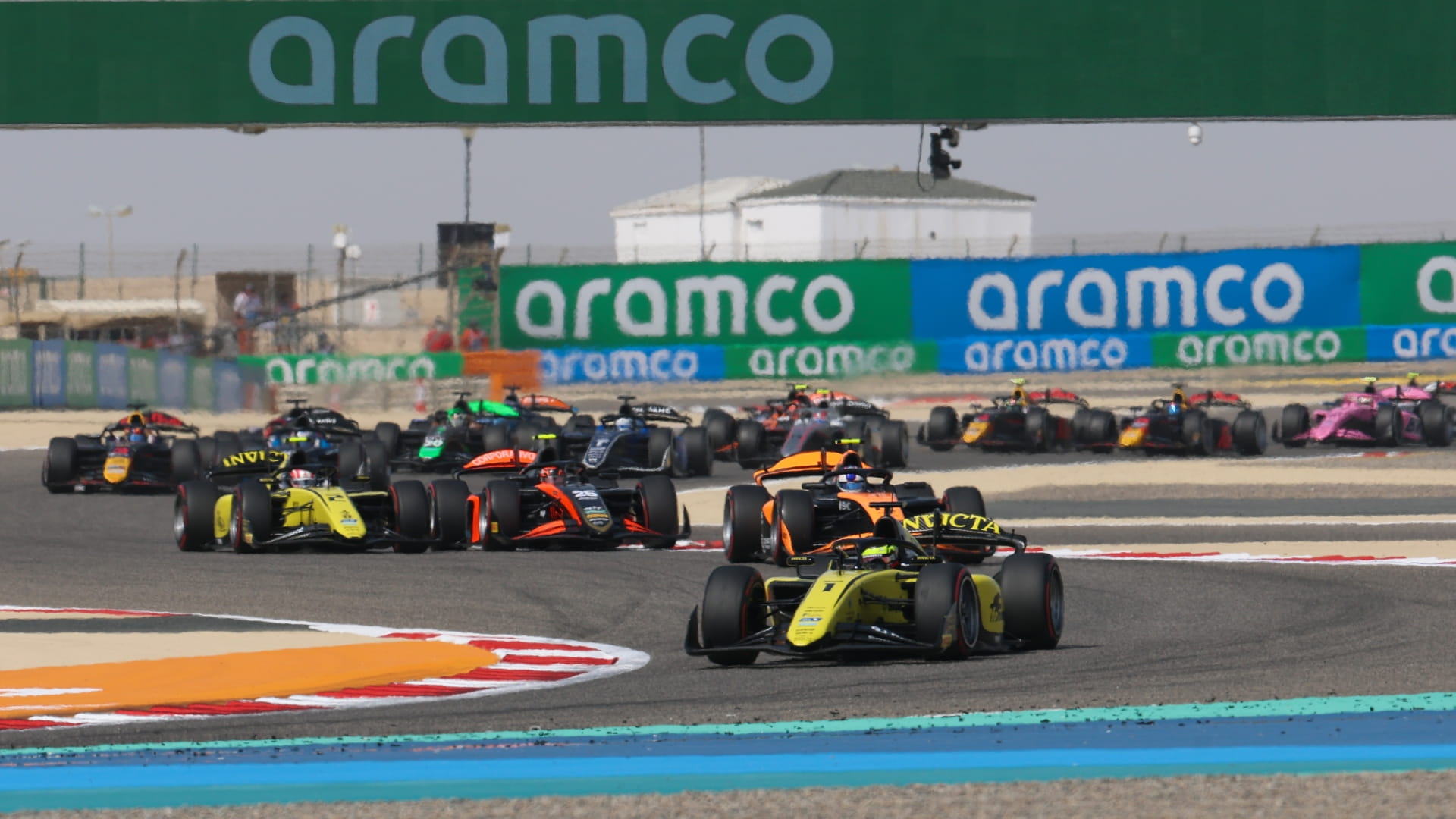Event
When the lights go out - behind the scenes at the start of a Formula 1 race
by Samarth Kanal
6min read
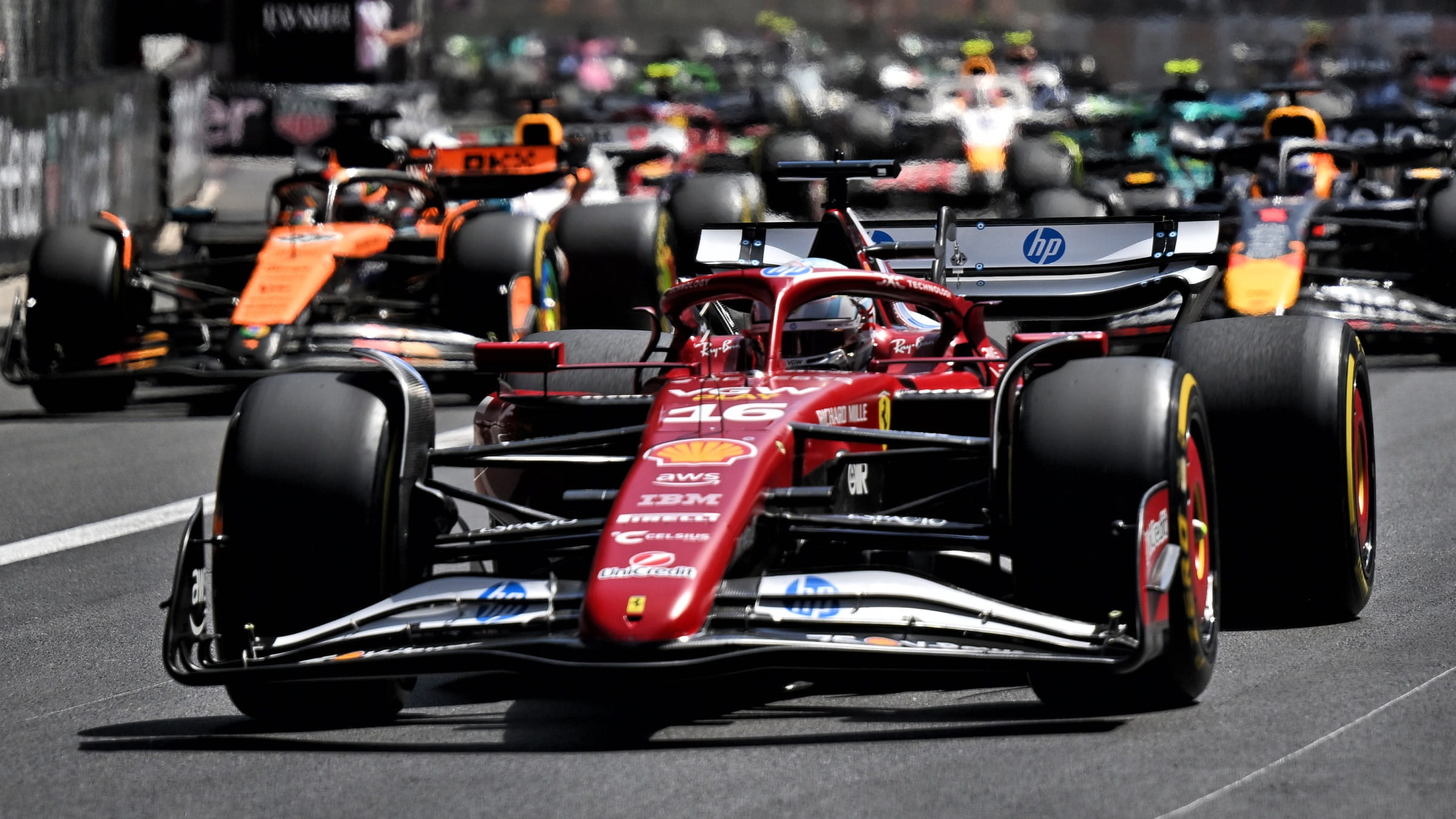
Starting a Formula 1 race releases the valve of pressure and anticipation that’s built up in the lead up to the grand prix and, in reality, it’s a simple process. Yet, the job of being permanent starter and the safety precautions around it are anything but simple.
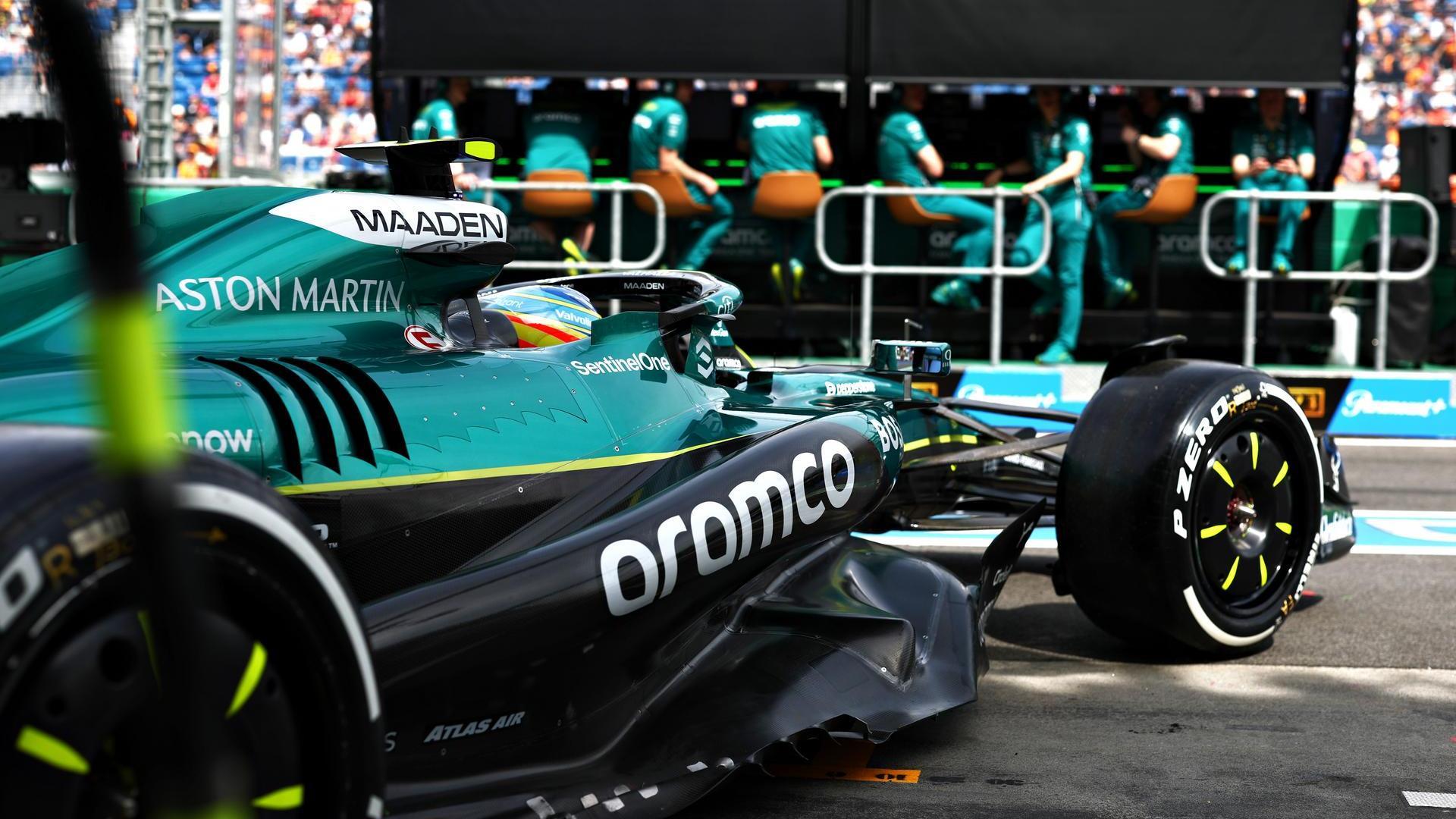
Sign up for a newsletter and we'll make sure you're fully up-to-date in the world of race technology
The FIA has a permanent starter in charge of getting Formula 1, Formula 2 and Formula 3 races underway. Her name is Rebecca Lee.
Raceteq explores the technology and process behind starting a race - and what FIA head of single-seater operations Lee does beyond her most televised role.
How to start an F1 race
Lee joined as a permanent starter in 2023 and her first start was that year's Singapore Grand Prix.
She has a temporary office for this pivotal role that is as close as it can be to the grid of F1, F2 or F3 cars and stands towering above the start/finish line at a circuit on the starting gantry that is located next to the row of starting lights.
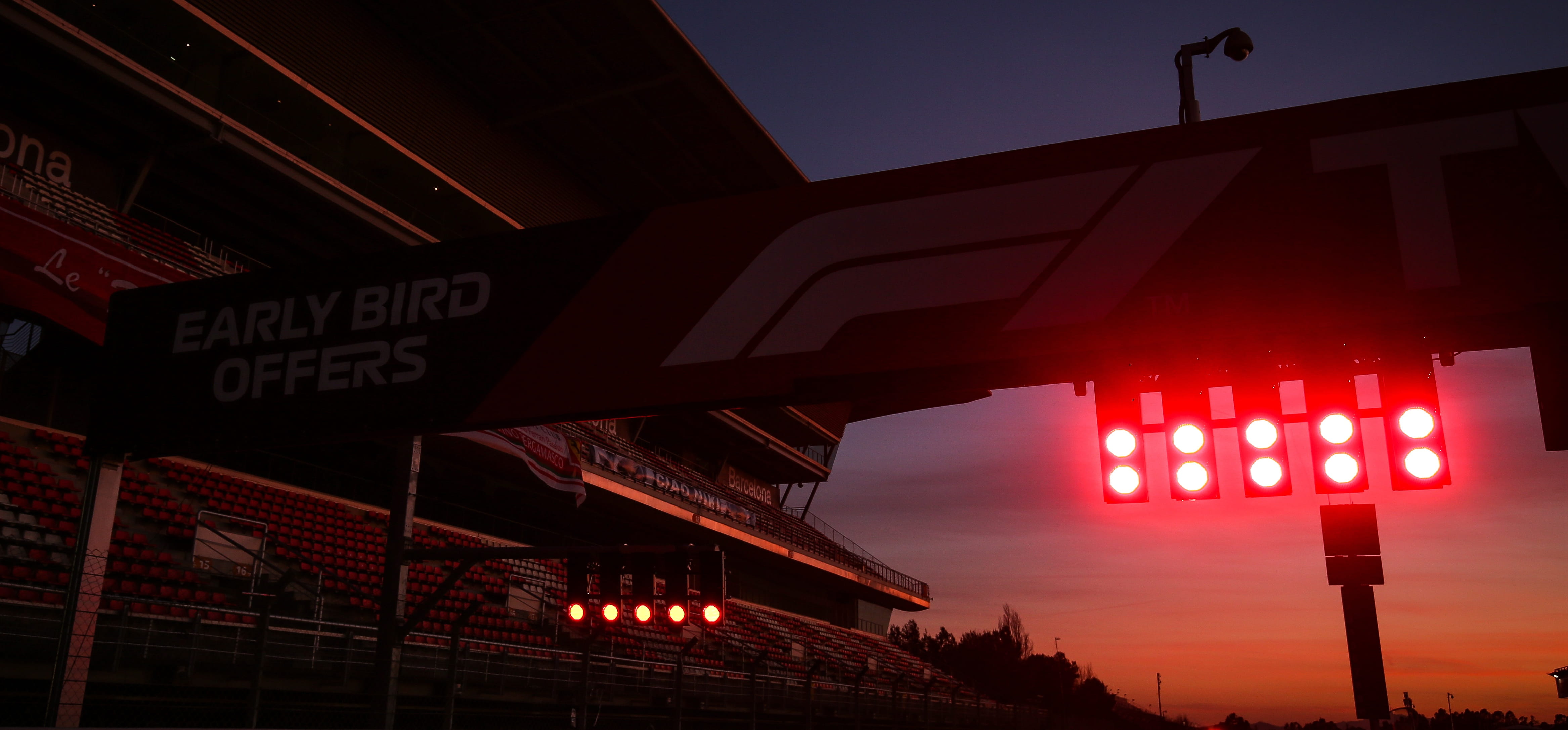
The starting lights and secondary starting lights at a grand prix
An hour before the race, Lee will check that the start panel - a bespoke piece of machinery commissioned by the FIA - is set up correctly, with every cable and button in place. It includes a screen showing telemetry, one showing timing, and another showing the status of the panel system.
The system will be programmed for the type of race and category she’s preparing to start.
The pitlane will then open and drivers will perform reconnaissance laps and arrive at the grid. The light will then go green to start the formation lap.
When the cars return to the grid they must stop in their starting grid positions, keep their engines running, and wait for the five-second light to appear.
Meanwhile, as the cars return to the grid, Lee watches for the grid lights next to the pitwall. They will turn green once every driver is in position. That gives her the signal that the starting panel is live.
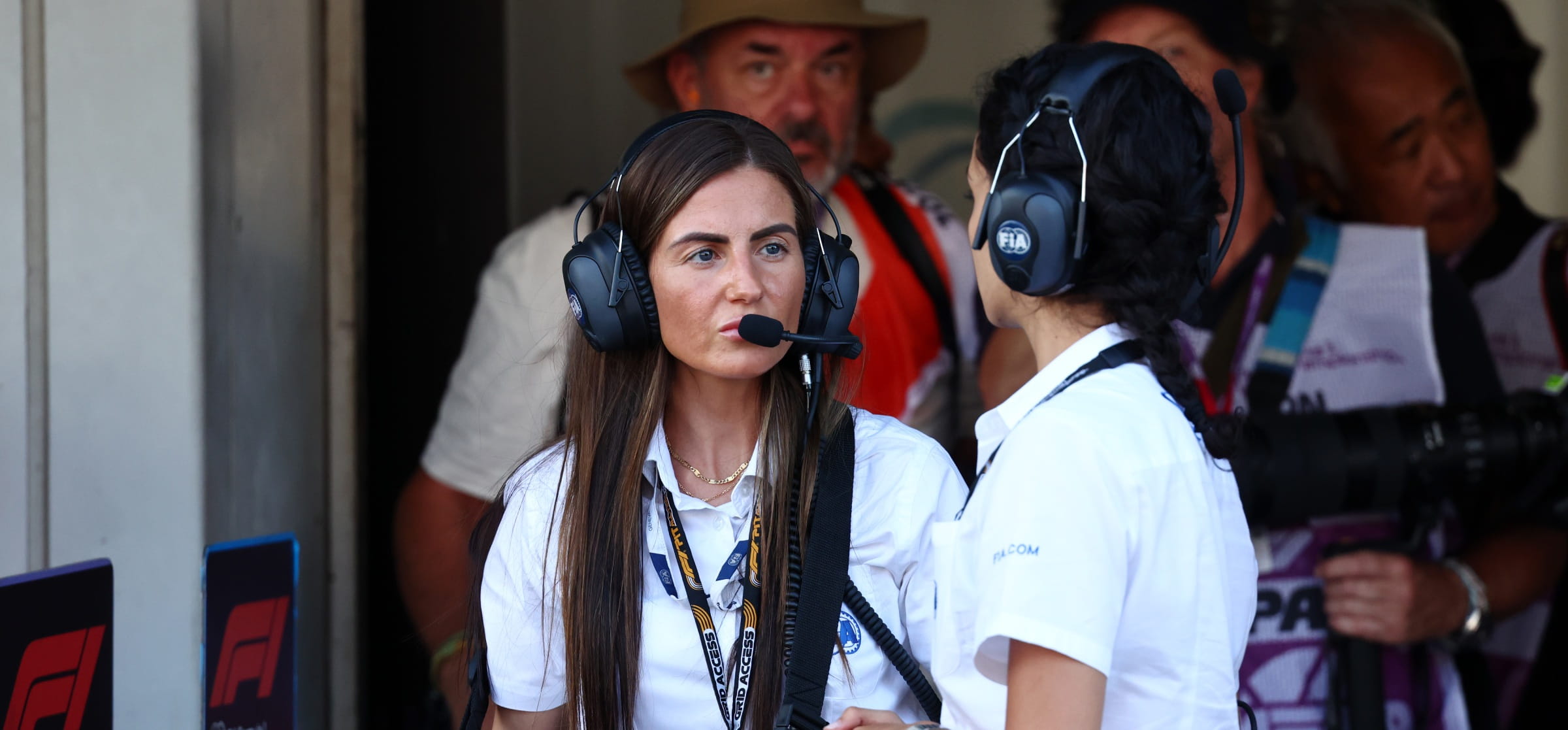
Rebecca Lee (L) is the FIA’s permanent starter and head of single-seater operations
Once the green flag is waved behind the field, she will hit the start button, the big green button on the left-hand side of the panel to initiate the sequence of five lights that count down. That’s followed by the four, three, two and one-second lights. After that five-second process, she will pause, press that green button, and the lights will extinguish to start the race.
It’s that simple. Of course, Lee has to stay on the gantry for the first couple of laps as accidents are more likely when the field is bunched together early on.
If the start needs to be aborted, she will be fully aligned with race control and the race director over radio, and hit the start abort button before pressing the green button to retrigger the starting sequence.
F2 and F3 races undergo exactly the same process, with the starting panel calibrated to include timing for those respective races, but Lee has colleagues who can share those duties.
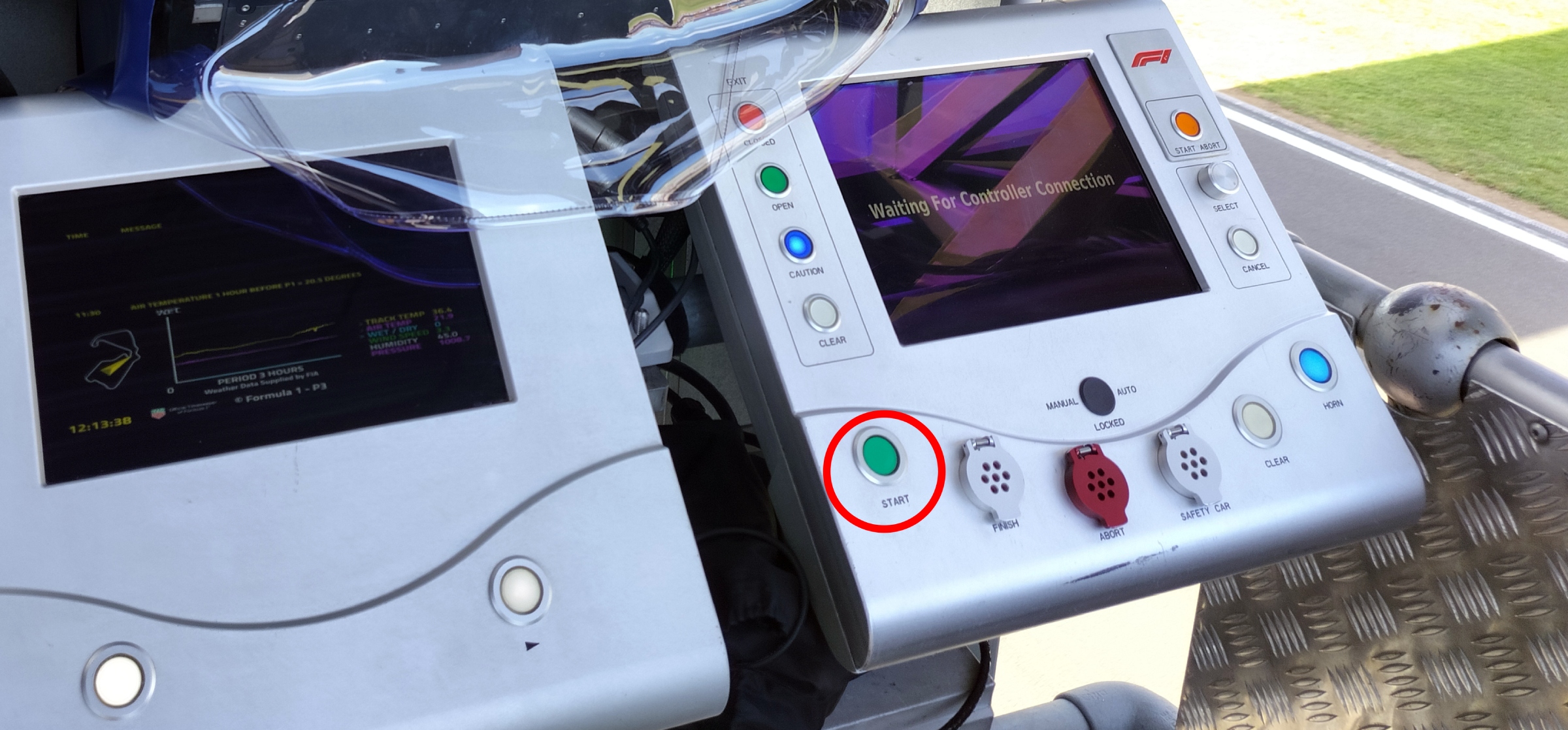
The FIA starting panel on the start gantry with the start button circled
What happens if there’s a false start?
There are cameras mounted on the side of the grid boxes that track each car’s position as the driver lines up in their box at the end of a formation lap and transponders that measure the position of each car, as well as tarmac sensors.
Onboard cameras can also be used to penalise drivers, as was the case for Lewis Hamilton at the 2024 Qatar Grand Prix.
Penalties are given for drivers who move after the four-second light is illuminated or before the red lights have been extinguished; for drivers who have transgressed their grid box “in such a way that the transponder is unable to detect the moment at which the car first moved from its grid position” after the lights go out; or if any part of the front tyres is outside the front and sides of the lines of their grid box at the time of the start signal.
Five-second or 10-second time penalties may be given for such infringements.
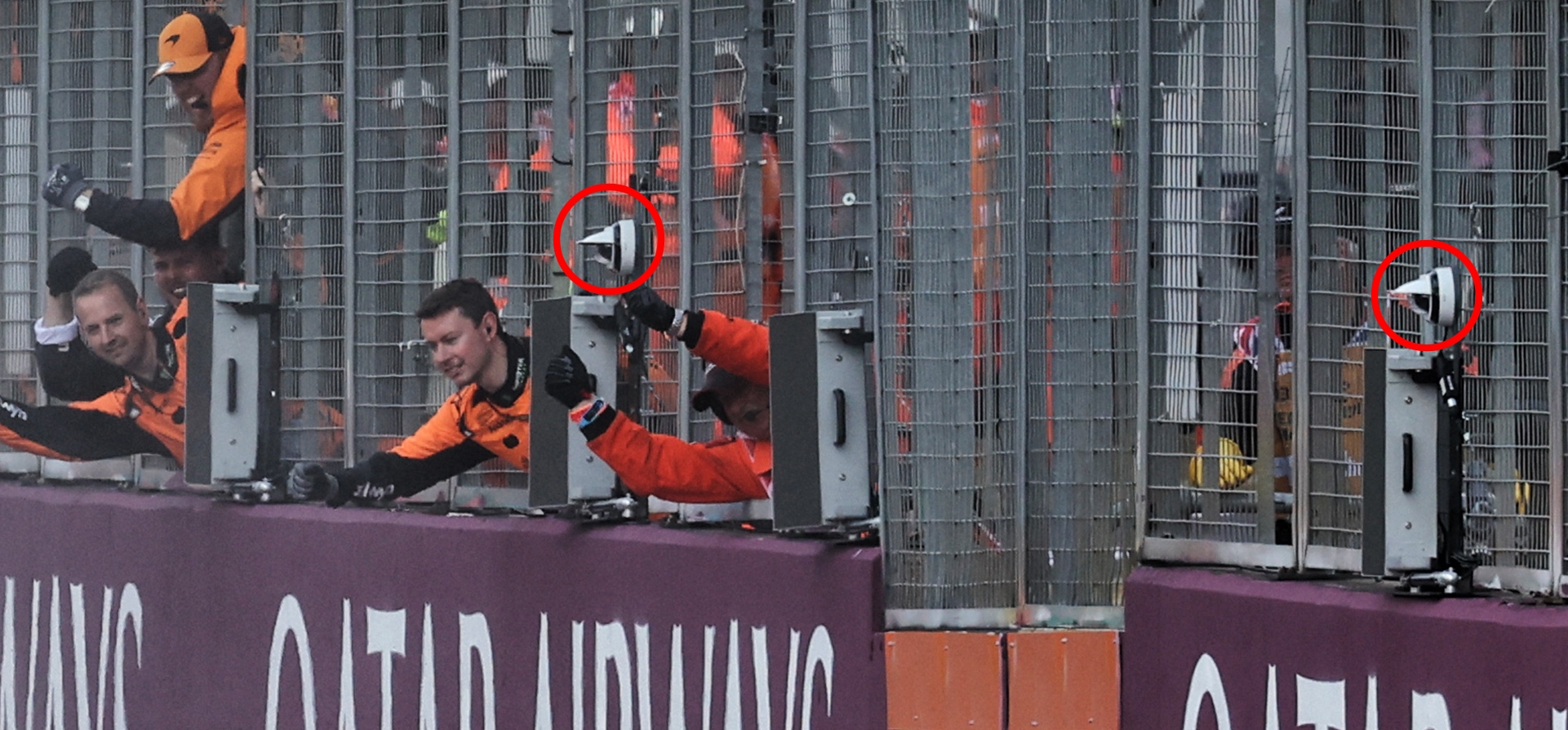
The FIA uses multiple methods to check for false starts including trackside cameras, as circled above
How the FIA makes sure the start process goes smoothly
The FIA takes a meticulous approach to ensure the safety of the competitors and that includes various tests on the starting gear to expose potential issues.
If communication with the drivers fails, they might not be aware that a race start has been aborted or an incident has occurred on the opening lap - potentially putting them in danger.
“Our system is fully integrated into our [timing and telemetry] software that we're using - RaceWatch - and we have multiple layers of redundancy to ensure that we're not going to be exposed at any time,” Lee says.
“We do test simulations, we're constantly checking it, we're monitoring it to make sure that it's compliant and we're never going to be exposed at any point.”
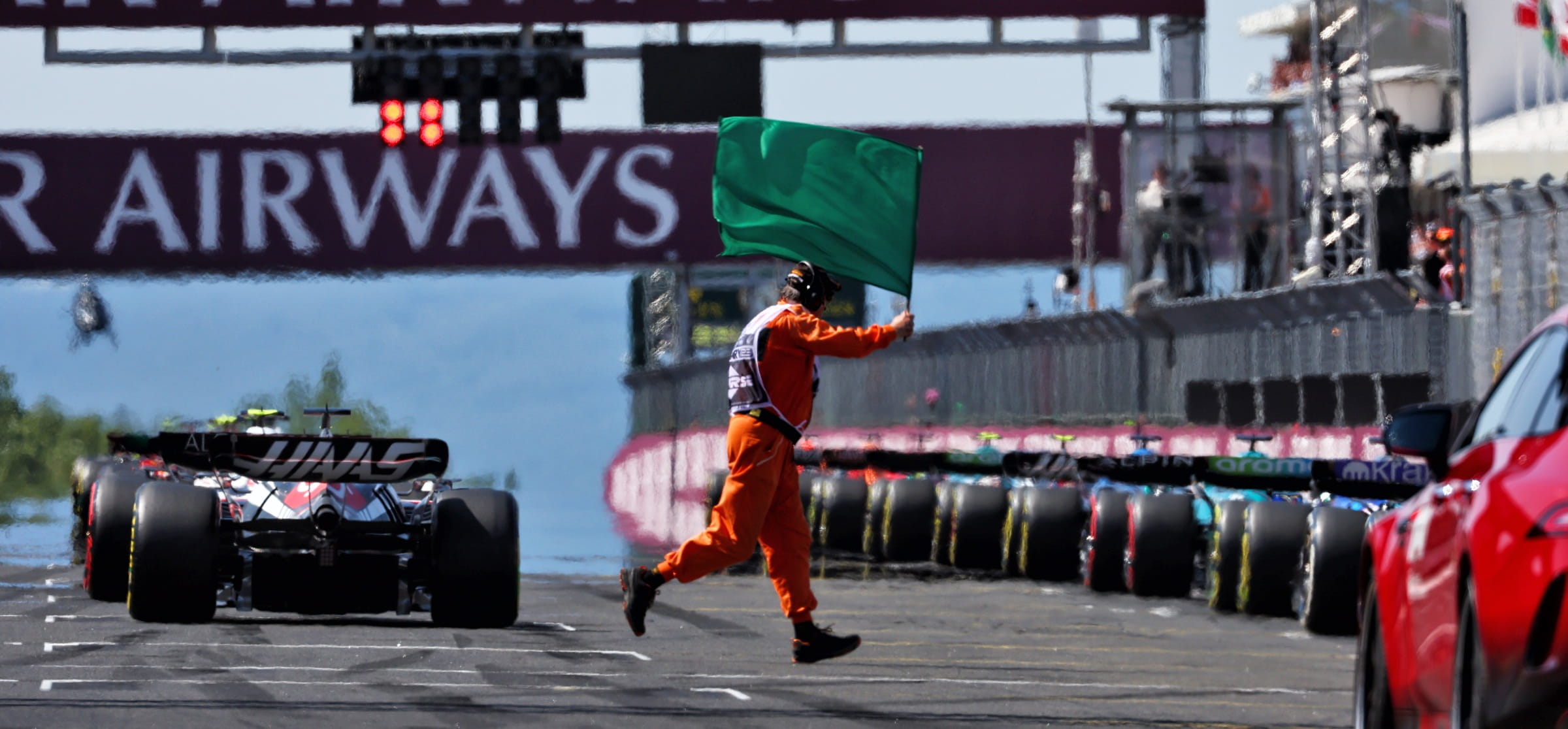
A marshal with a green flag runs behind the grid to show that the start signal can be given
Lee runs through different scenarios with the team at race control to ensure aborted starts, race starts, and red flags, appear correctly on the digital screens and telemetry that gets sent to the cars and pitwall.
“We can also do tests remotely, so we don't have to stand here and physically test the panel here. We can go and do it in race control. And obviously we can monitor and track the system's behaviour the whole time. So, it's something that we're constantly keeping an eye on.”
Lee’s job involves more than starting F1 races.
What else does the FIA’s permanent starter do?
Standing on the gantry and watching F1 cars blaze by in the blink of an eye might seem an exciting proposition but, as Lee says, this is only a “tiny fraction” of her job as head of operations for the FIA.
“I'm looking after every event, I'm working with the local organiser to ensure that they're facilitating all of our needs before we come to a grand prix. I'm doing all of the plans, all of the logistics, looking after all of the compliance, making sure we’re legal and compliant with all of the equipment that we're carrying.
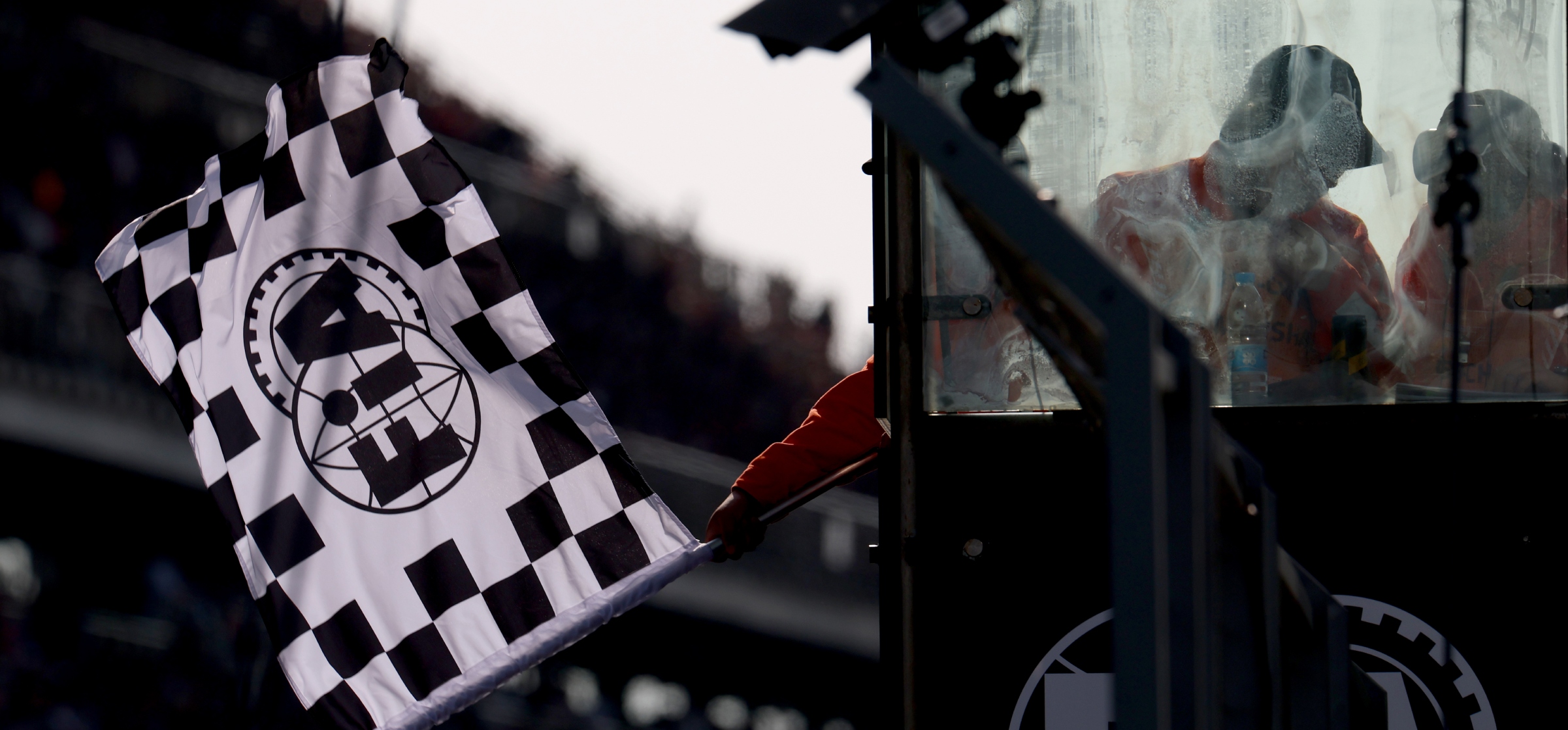
Lee also ensures the chequered flag is flown correctly
“I'm working with the ASNs [national sporting authorities] and the marshals, making sure we’ve got the staff in place, and I’m also looking after the budgets, and the finances and some of our contracts with some of our suppliers.”
She also ensures that the chequered flag is flown at the correct time by the nominated celebrity or figure on the start/finish gantry.
It’s a rush to stand on the start/finish gantry, especially at a historic circuit such as Silverstone. But Lee is focused on a much wider task - and that is central to making sure race weekends run without a hitch.
.jpg?cx=0.5&cy=0.5)
.jpg?cx=0.5&cy=0.5)
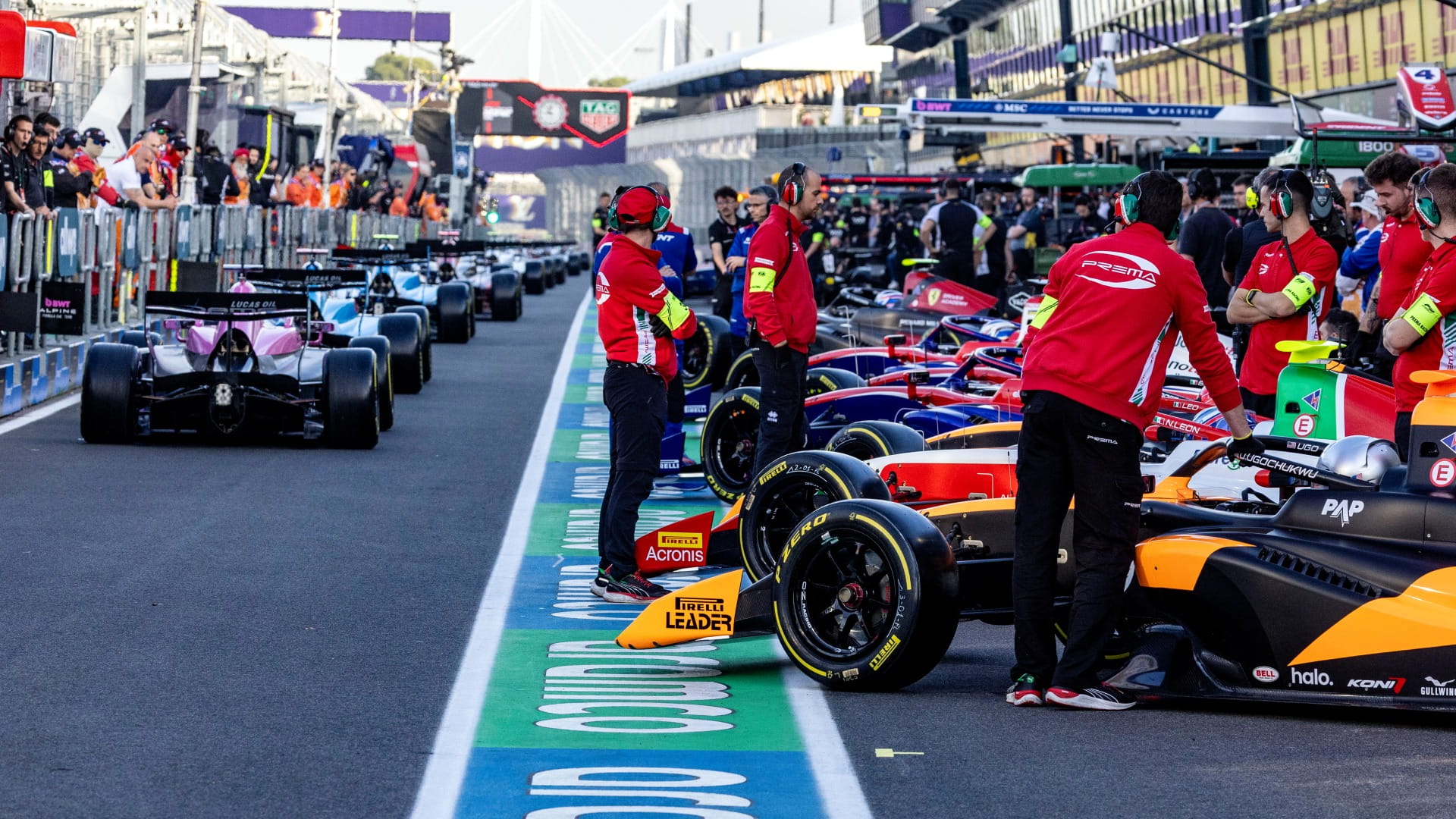

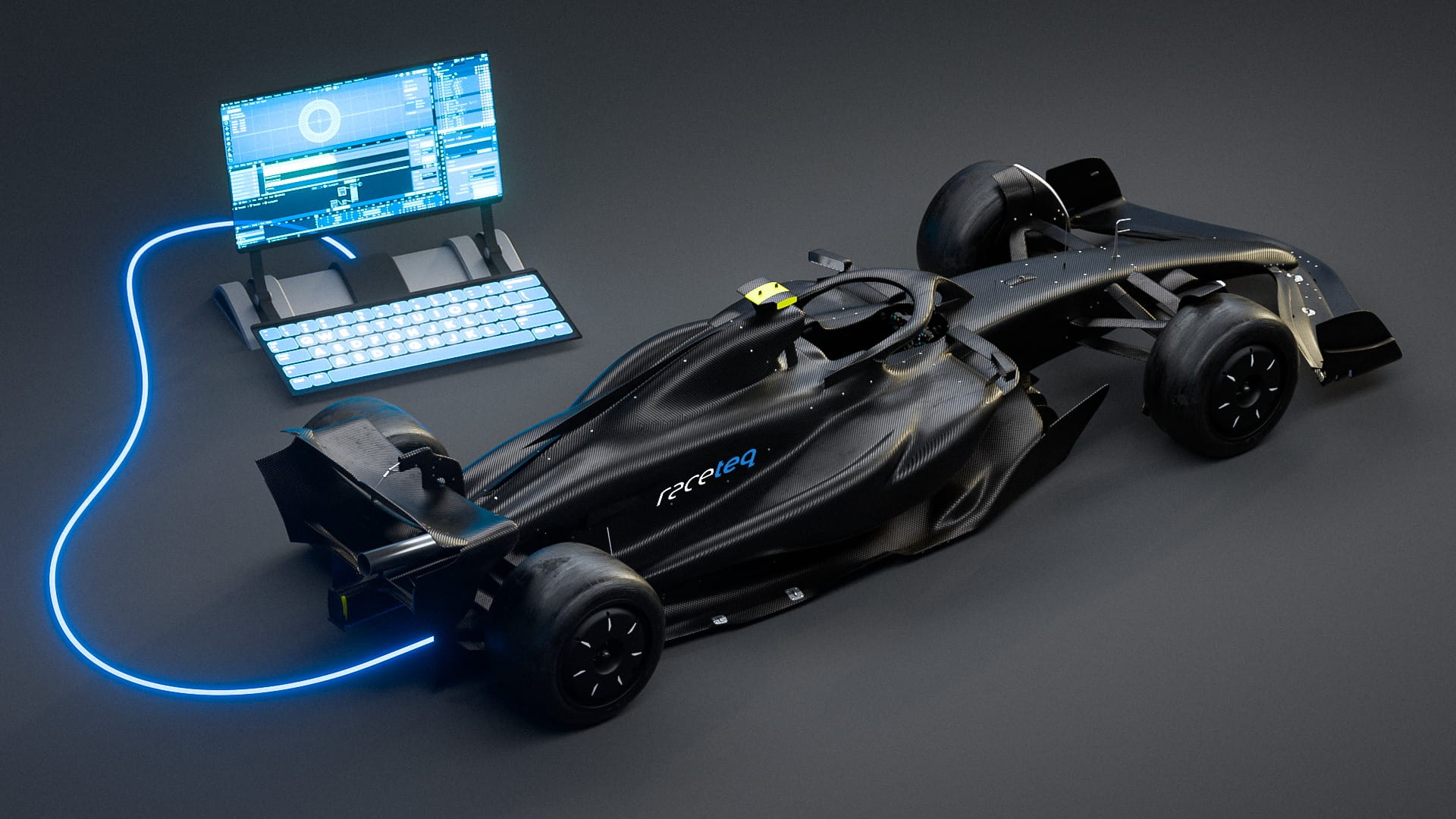
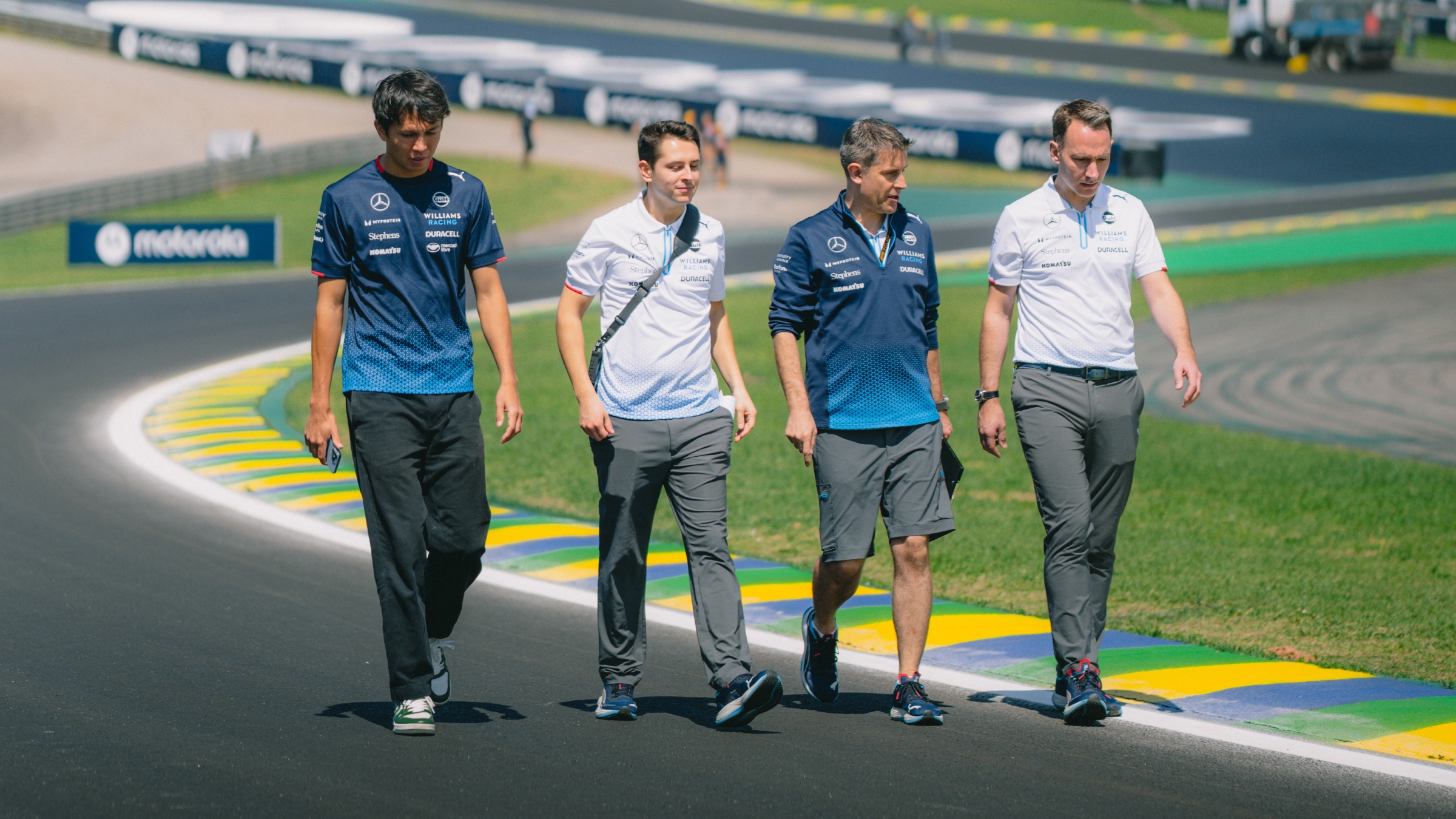
.jpg?cx=0.5&cy=0.5)
